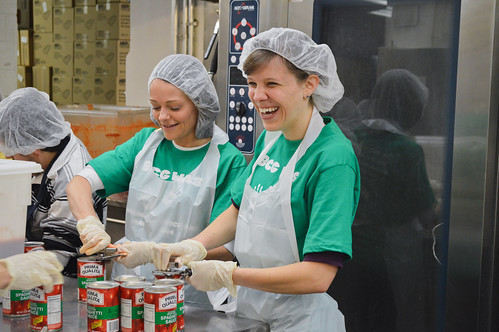
There are always more jobs to do than people to do them in nonprofit work.
It’s easy to fall into the trap of believing every person is suited for every task, because it’s about what’s needed and when.
But people bring all kinds of different skills to the table, and we take a big risk trying to fit round pegs into square holes. Some people might be highly sociable and perfect for interacting with donors, while others could be data wizards who freeze up when making a phone call. Are you doing your organization and your volunteers a disservice by putting those data wizards at a registration table with donors? Or by keeping your social butterflies in a back room?
Variety in skill set doesn’t make one volunteer or staff person less useful than another. The best use of your human resources is putting people to work doing what they like, and what they’re good at doing.
Are your volunteers or employees unhappy?
People get involved with nonprofits because they want to help a cause, leading a lot of do-gooders to take on work that doesn’t come naturally to them. Usually you’ll never hear a peep of complaint—except maybe from a donor who’s been mishandled. So you’ll need to be proactive about discovering whether people are happy.
Let’s start by doing a quick diagnosis of the health of your organization and ask yourself these questions:
- Do you have volunteers who show up for one event and don’t come back?
- Are your paid staff in good spirits? Or are they stressed or frustrated?Are your staff and volunteers getting along? Able to work together without friction?
- Do you have big donors who don’t return to events without explanation?
Sometimes unhappy staff and volunteers are indicative of a larger problem. People volunteer because they feel a connection with the cause or the work. If those people are leaving unhappy and unfulfilled, it’s crucial to ask, “Why?”
Do volunteers feel appreciated and important?
A quick solution, even if you don’t know the answer to the question, is to check whether volunteers are properly thanked for their contribution. Ensure that after every volunteer event, someone is sending cards or organizing a thank-you party for volunteers, to show them they’re appreciated. Take this opportunity to do a questionnaire about what volunteers liked or didn’t like; whether they felt they excelled at their assignment; and if they want to volunteer again.
Are staff kind to the volunteers? Do volunteers feel respected?
Good managers are important—and rare—people. You want staff managing volunteers who are good at dealing with people, and who can handle the varied needs and feelings of volunteers with empathy and care. Remember that volunteers are giving you their labor for free, and so require a little more delicacy in their handling if you want them to keep coming back.
Are staff and volunteers meeting their roles’ benchmarks and goals?
Staff and volunteers struggling to accomplish what they set out to do is a clear sign that something is amiss. Perhaps they aren’t getting the support they need from leadership or other staff members to get their jobs done. Perhaps people simply don’t have the skills required to do what they’ve been assigned.
This crops up a lot when jobs “rotate,” e.g. when people get a new job every year at, say, the annual fundraising gala. People will naturally have a harder time doing work outside their skillset.
For example, giving a big picture job to someone who has painstaking attention to detail is a guaranteed way to overwhelm them and leave them feeling inadequate—and unhappy at the end of the day.
Assigning jobs according to strengths encourages unity, cooperation, and overall satisfaction.
People in a work environment get along better when they’re equipped to give each other what they all need to meet their goals. Asking a staff member or volunteer to deliver on a task outside their zone of expertise often leaves them feeling inferior and frustrated by not being able to accomplish what’s been asked of them. Additionally, this gap can leave people stranded who need those goals met in order to do their own jobs.
Tip:
- Put the right people out there networking.
- Prioritize fit for a job over convenience.
- And always exercise compassion and kindness to help build a solid, viable volunteer base.
What can I do to find the right roles for my staff and volunteers?
- Begin all of your volunteer relationships with a volunteer intake questionnaire to find out up front about their strengths and areas of interest. Use that information to put volunteers into roles that make the best use of their skills, so they can feel accomplished and effective.
- Be proactive and ask staff members about their experiences too. What do they feel is lacking in their work environment? Are they satisfied with their roles? This can mitigate a lot of interpersonal conflict. Not all people who want to be managers are good at managing people. Some people who work in development are better at the number-crunching than at mitigating conflicts with sponsors. And that’s okay!
Remember that you can’t do it all, either.
It’s important for leadership to recognize that these same rules apply to themselves, too—just because someone wants a job doesn’t mean they’re the best fit for it.
Good leadership requires good delegation. You can’t be everywhere at once, and if you try, something will fall through the cracks—which can sometimes lead to event disaster. Focus on what you know you can do well, and pass off everything else to people you trust.
Finding the right people for those critical jobs is a great way to take some of the burden off your shoulders.

